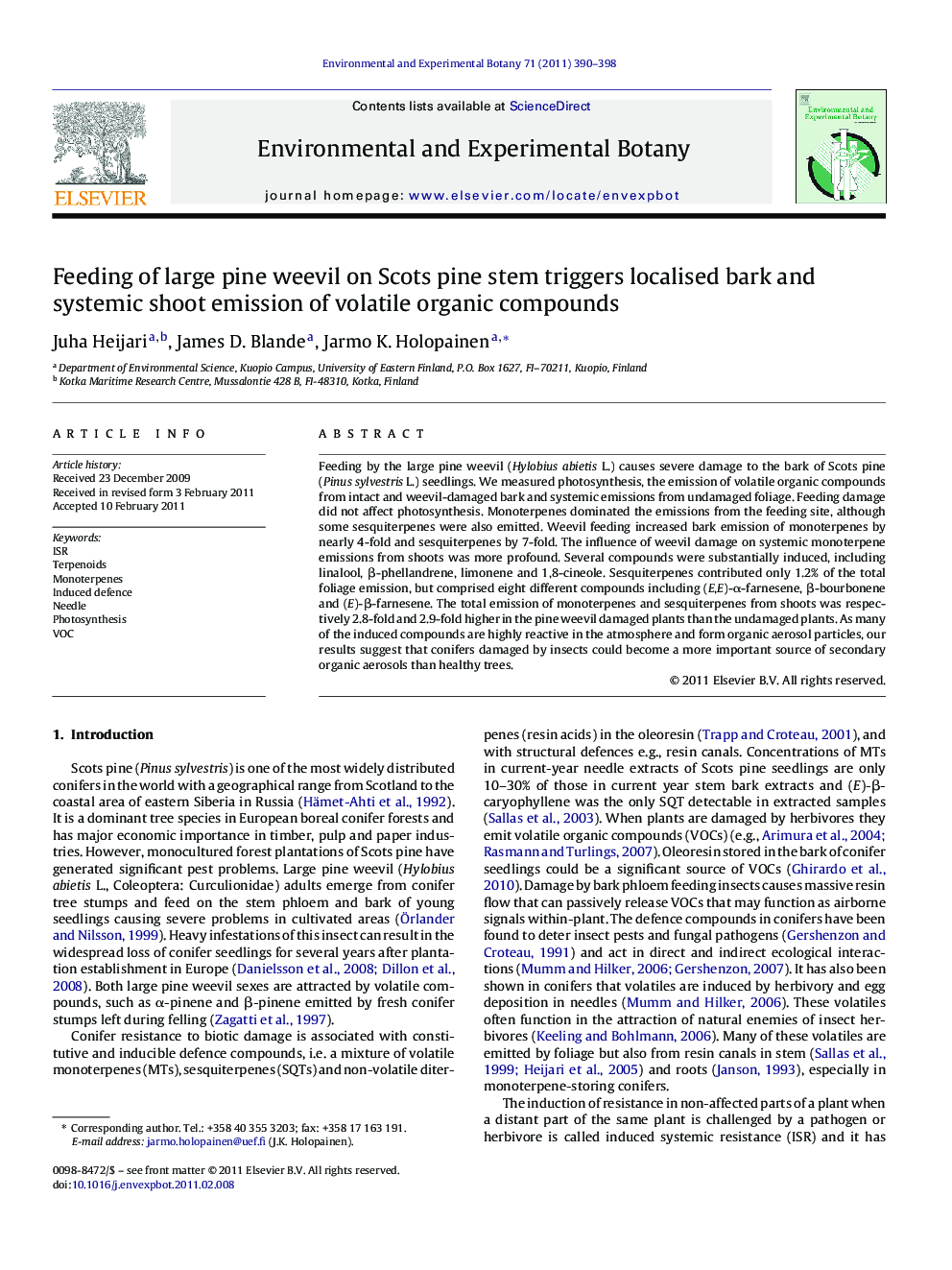| Article ID | Journal | Published Year | Pages | File Type |
|---|---|---|---|---|
| 4554910 | Environmental and Experimental Botany | 2011 | 9 Pages |
Feeding by the large pine weevil (Hylobius abietis L.) causes severe damage to the bark of Scots pine (Pinus sylvestris L.) seedlings. We measured photosynthesis, the emission of volatile organic compounds from intact and weevil-damaged bark and systemic emissions from undamaged foliage. Feeding damage did not affect photosynthesis. Monoterpenes dominated the emissions from the feeding site, although some sesquiterpenes were also emitted. Weevil feeding increased bark emission of monoterpenes by nearly 4-fold and sesquiterpenes by 7-fold. The influence of weevil damage on systemic monoterpene emissions from shoots was more profound. Several compounds were substantially induced, including linalool, β-phellandrene, limonene and 1,8-cineole. Sesquiterpenes contributed only 1.2% of the total foliage emission, but comprised eight different compounds including (E,E)-α-farnesene, β-bourbonene and (E)-β-farnesene. The total emission of monoterpenes and sesquiterpenes from shoots was respectively 2.8-fold and 2.9-fold higher in the pine weevil damaged plants than the undamaged plants. As many of the induced compounds are highly reactive in the atmosphere and form organic aerosol particles, our results suggest that conifers damaged by insects could become a more important source of secondary organic aerosols than healthy trees.
Research highlights► We assessed monoterpene and sesquiterpene emissions from intact and herbivore-damaged Scots pine seedlings. ► Herbivore damage was induced by pine weevil feeding on stem bark of the seedlings. ► Bark emissions from feeding sites were increased substantially, 4–7-fold. ► Systemic emissions from pine shoots had nearly 3-fold increase. ► Proportion of highly reactive volatile emission increases after herbivore attack on conifers.
